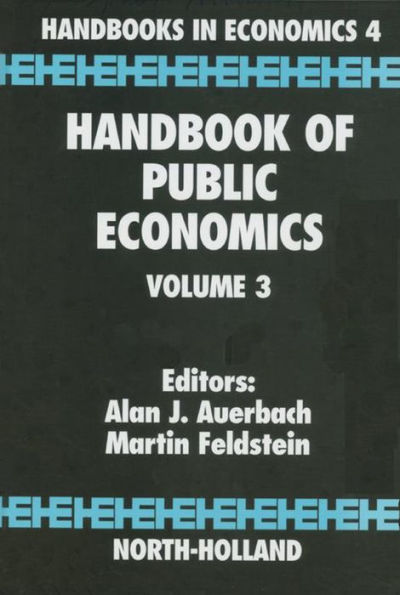Handbook of Public Economics
The Field of Public Economics has been changing rapidly in recent years, and the sixteen chapters contained in this Handbook survey many of the new developments. As a field, Public Economics is defined by its objectives rather than its techniques and much of what is new is the application of modern methods of economic theory and econometrics to problems that have been addressed by economists for over two hundred years. More generally, the discussion of public finance issues also involves elements of political science, finance and philosophy. These connections are evidence in several of the chapters that follow. Public Economics is the positive and normative study of government's effect on the economy. We attempt to explain why government behaves as it does, how its behavior influences the behavior of private firms and households, and what the welfare effects of such changes in behavior are. Following Musgrave (1959) one may imagine three purposes for government intervention in the economy: allocation, when market failure causes the private outcome to be Pareto inefficient, distribution, when the private market outcome leaves some individuals with unacceptably low shares in the fruits of the economy, and stabilization, when the private market outcome leaves some of the economy's resources underutilized. The recent trend in economic research has tended to emphasize the character of stabilization problems as problems of allocation in the labor market. The effects that government intervention can have on the allocation and distribution of an economy's resources are described in terms of efficiency and incidence effects. These are the primary measures used to evaluate the welfare effects of government policy.
"1116736474"
Handbook of Public Economics
The Field of Public Economics has been changing rapidly in recent years, and the sixteen chapters contained in this Handbook survey many of the new developments. As a field, Public Economics is defined by its objectives rather than its techniques and much of what is new is the application of modern methods of economic theory and econometrics to problems that have been addressed by economists for over two hundred years. More generally, the discussion of public finance issues also involves elements of political science, finance and philosophy. These connections are evidence in several of the chapters that follow. Public Economics is the positive and normative study of government's effect on the economy. We attempt to explain why government behaves as it does, how its behavior influences the behavior of private firms and households, and what the welfare effects of such changes in behavior are. Following Musgrave (1959) one may imagine three purposes for government intervention in the economy: allocation, when market failure causes the private outcome to be Pareto inefficient, distribution, when the private market outcome leaves some individuals with unacceptably low shares in the fruits of the economy, and stabilization, when the private market outcome leaves some of the economy's resources underutilized. The recent trend in economic research has tended to emphasize the character of stabilization problems as problems of allocation in the labor market. The effects that government intervention can have on the allocation and distribution of an economy's resources are described in terms of efficiency and incidence effects. These are the primary measures used to evaluate the welfare effects of government policy.
131.49
In Stock
5
1

Handbook of Public Economics
674
Handbook of Public Economics
674
131.49
In Stock

Product Details
| ISBN-13: | 9780080544199 |
|---|---|
| Publisher: | Elsevier Science |
| Publication date: | 01/25/2002 |
| Series: | ISSN , #3 |
| Sold by: | Barnes & Noble |
| Format: | eBook |
| Pages: | 674 |
| File size: | 10 MB |
From the B&N Reads Blog
